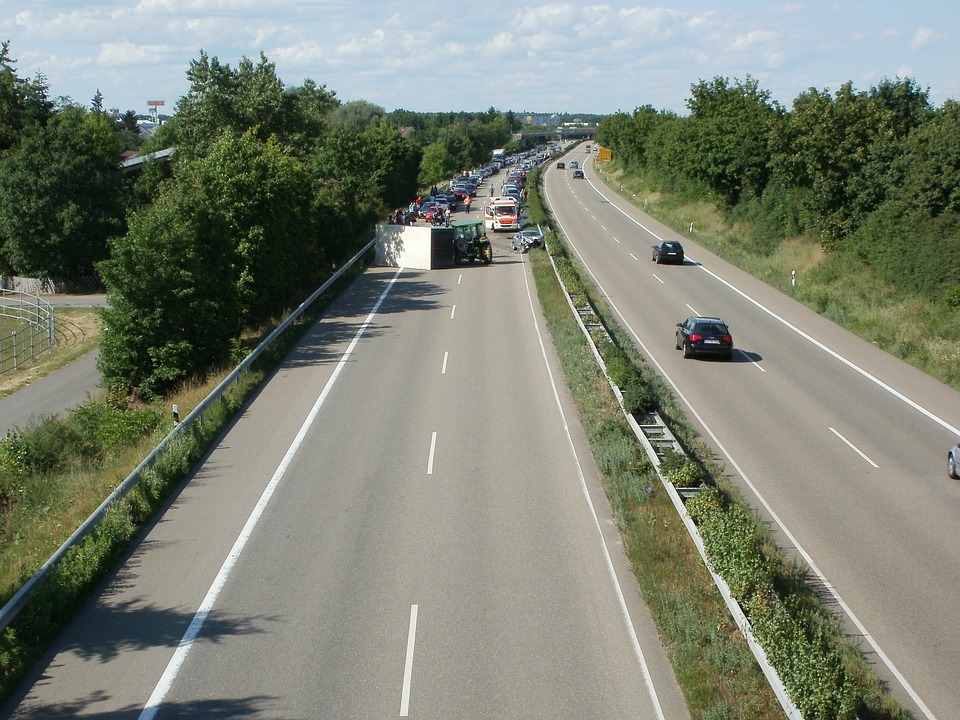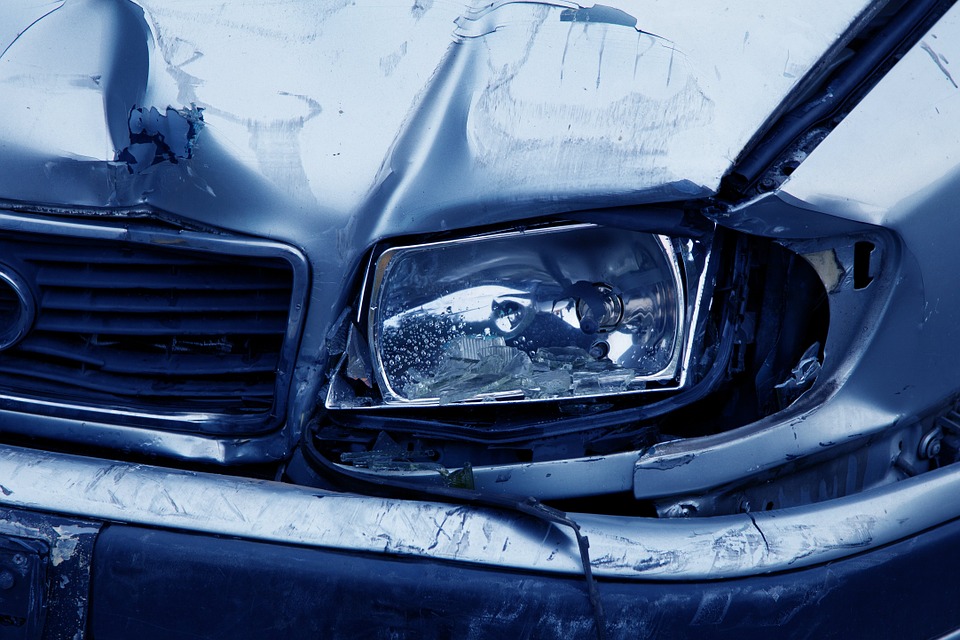
The roads of Ontario are among the safest in the world, according to the Ontario Provincial Police (OPP), the Ministry of Transportation, and several road safety associations. Despite this, however, our roads and highways are the setting of thousands of motor vehicle accidents and hundreds of casualties each year as a result. And some roads are less safe than others.
The OPP claims that speeding and road risks are the highest cause of accidents on any given year, while distracted driving is the most common contributing factor in most automobile-related deaths in Ontario.
Roads with a History
It’s always advisable to be cautious and alert when driving a vehicle, riding a bicycle, or simply crossing the street. That said, certain roads and highways are statistically more likely to produce accidents, and they should be navigated with an additional dose of awareness. These are the most dangerous roads in Ontario.
Highway 401, from Whites Road to Courtice Road (Whitby area)
- This stretch of highway is only 32 kilometres long, but according to the OPP, you have a higher chance of being involved in an automobile accident here than you do anywhere else in the province of Ontario. Predictably, rush hour is the most dangerous time of day on Ontario’s most dangerous road, with the number of collisions peaking in the mornings, between 6 a.m. and 9 a.m., and in the afternoon, from 2 p.m. to 7 p.m.
Highway 48, from Bloomington Road to Smith Boulevard (Aurora area)
- When thinking of dangerous stretches of road, you’d be forgiven for conjuring up only images of eight-lane superhighways. One of Ontario’s most dangerous stretches of pavement, however, is this two-lane route. Having just one lane going in each direction, drivers in a hurry and attempting to pass one another often do so in an improper and risky fashion. This has led to this small stretch of highway, less than 25 kilometres long, accounting for 67% of all collisions in the Aurora and Barrie area.
Highway 401, from Pickering to Oshawa
- The 401, unsurprisingly, makes a repeat occurrence on our list, and it won’t be the last. This stretch of the highway—east of Toronto—is one of the busiest in the province. Consequently, it’s one of the most dangerous in terms of sheer numbers. In 2013, a pileup involving 80 vehicles stretched across 1.5 kilometres. Recently, a single rolled car caused a four-vehicle crash in the early hours of a spring morning.
Highway 8, Canal Road (Newmarket area)
- One of Canada’s most notorious roads, Highway 8’s Canal Road has an infamous reputation built by the tragic events that happen there far too regularly. Despite being in a sparsely populated area, this road near Newmarket has laid claim to the lives of many drivers who have lost control of their vehicles and plunged into the icy depths of the river that runs alongside it.
The outcry from the families of some of the victims has led to the enactment of some safety measures, including the installation of guardrails and attempts to increase awareness of the dangers posed by the proximity of the river to the road. However, residents of the surrounding communities still call Canal Road a death trap and continue to fight for more funding to safeguard this stretch of highway.
Highway 401, from Windsor to London
- What the CBC has described as a stretch of “nondescript, boring agricultural landscape” is better known by residents from Windsor to London by the unpleasant moniker of Carnage Alley. The name dates back to the 1990s when an 87-vehicle pileup took the lives of 8 people and injured 45. Unsurprisingly, a nickname like that has a way of sticking around, especially if little has been done to improve its safety.
That “boring agricultural landscape” causes drivers to become inattentive, distracted, and fatigued, leading them to inadvertently cross the median barrier and be involved in head-on collisions. Despite its reputation, a concrete barrier has yet to be erected to protect this stretch of highway. Safety advocates hope that doing so will help it to shed the title of Carnage Alley once and for all.
According to Drivers
The Globe and Mail recently polled readers for their 10 least favourite Ontario roads to drive on, and the results skew heavily towards the vital roadways that link smaller municipalities. Out of the 2,500 roads nominated, these are the ones chosen by drivers as the worst to drive on in the province:
- County Road 49, Prince Edward County
- Algonquin Boulevard West, Timmins
- Balmoral Street, Thunder Bay
- Algonquin Street East, Timmins
- Queenston Street, St. Catharines
- Burlington Street East, Hamilton
- Lorne Street, Sudbury
- Bayview Avenue, Toronto
- Dufferin Street, Toronto
- Riverside Drive, Timmins and Water Street, Thunder Bay
Dangerous Days
A 2018 study involving in-depth analysis of the collision claims reported by Allstate Canada found that more accidents happen on Fridays than any other day of the week. A disproportionate amount of collisions occur as people commute home from work, head out of town for the weekend, or get behind the wheel intoxicated later in the evening.
The safest day of the week to drive, according to the study, is Sunday.
‘Tis the Season
Anyone who has been on the road during the holidays will be unsurprised to learn that the days leading up to Christmas are the most accident-heavy in Ontario. Be particularly careful if you’re on the road on December 21, as this is the day of the year that sees the most automobile accidents take place.
Christmas itself, conversely, is the safest day of the year to be on the road. It sees the least number of collisions reported, likely due to the low amount of traffic on the streets that day.
The Dog Days of Danger
Despite the holidays generally being a dangerous time for driving due to inclement weather and drunk drivers, the majority of road accidents in Ontario take place in the summertime.
Higher traffic volumes in July and August make summer the most dangerous season to be on the road. People making their way to and from cottage country, as well as increased incidences of driving under the influence, are the main contributors. Being on the roads of the Heartland Province during those months means having to exercise extreme caution at all times.
More Facts about Driving in Ontario
- Hamner—to the north of Sudbury—is the safest community to drive in, per capita.
- North York is statistically the most dangerous town for driving.
- Two communities are tied for the greatest increase in collision claims over the past decade: Kitchener and Brantford.
Doing Our Part
Safe driving is an aspect of the social contract that we engage in as a part of being a member of our communities, big and small. Every day in this country, tragedy strikes unsuspecting families and friends who learn that a loved one has been involved in a road accident.
According to the previous commissioner of the OPP, J.V. Hawkes, the “majority of [automobile] deaths [are] preventable and attributed to poor driving behaviours. Until all drivers respect and observe road, off-road and marine laws that are designed to keep us all safe, these tragic deaths will continue.”
Avoid, if at all possible, Ontario’s most dangerous roads. There is a lot of joy, and most importantly safety, to be found in taking one’s time, enjoying the pleasant freedom of driving a car, and opting for the scenic route.
DWA LAW Is There to Help
If you’ve been involved in an automobile accident, our experienced lawyers are available to help you navigate the complexities of the Canadian legal system. Contact us today, and get the compensation you may be owed.






